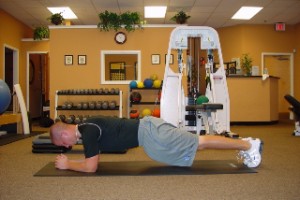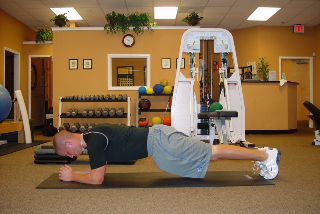With the good weather finally here, there are many runners coming out of hibernation. Every runner wants to either improve their speed or increase their distance, and often, the way they go about that is just by running more.
But that’s not going to do it. Working the core is actually your best bet.
Many people just think core is another word for abs – so they do more crunches. While your abs are part of it, the core covers a much larger area. Your core muscles run the length of the trunk and torso – when they contract, they stabilize the spine, pelvis and shoulder girdle to create a solid base of support. This support then enables us to transfer energy from the center of the body out to the limbs and generate the movement needed for running. Core training supports the efficient interaction of the ankle, knee, and hip mobility.
If any of the muscles in the core are weak, it can have a big impact on your form while running: If the hip abductors are weak for example, it can cause the entire leg to over-pronate. Some common injuries include anterior knee pain, patellar tendonitis, shin splints, plantar fasciitis, stress fractures, achilles tendonitis, IT band tendonitis, low back pain, and various strains and sprains.
One exercise that works the core is the plank hold, depicted in the photo above. Here’s how to do it:
Lie face down on a mat resting on your forearms, palms flat on the floor. Push off the floor, raising up onto toes and resting on the elbows – shoulder and elbows aligned – forearms parallel. Keep your back flat, in a straight line from head to heels. Tilt your pelvis and contract your abdominals to prevent your rear end from sticking up in the air. Hold for as long as you can without sacrificing form. Rest for 60 seconds and repeat 3 times.
Photo, top, courtesy of Nadine S, below, courtesy of gio50000, both on Flickr.


